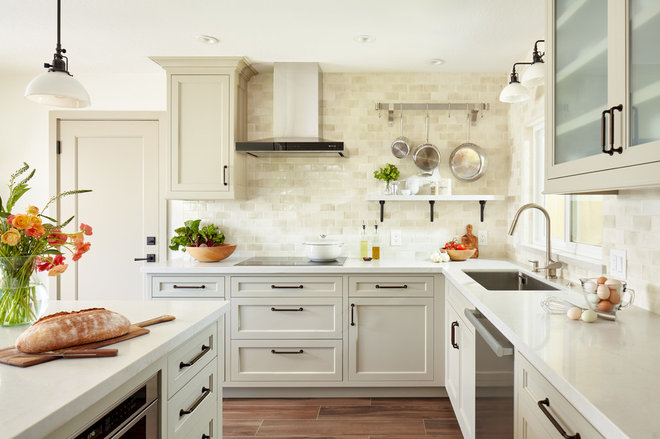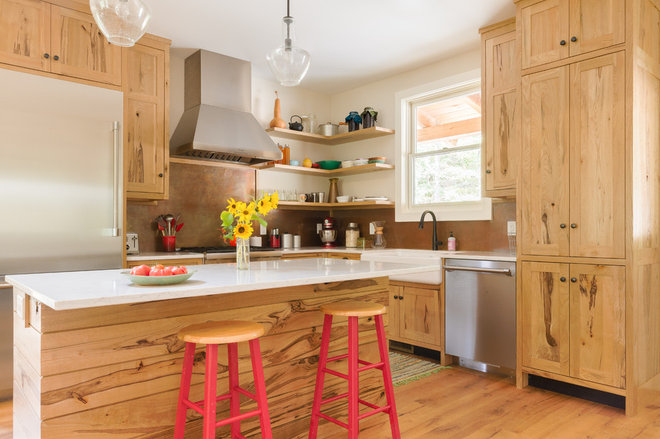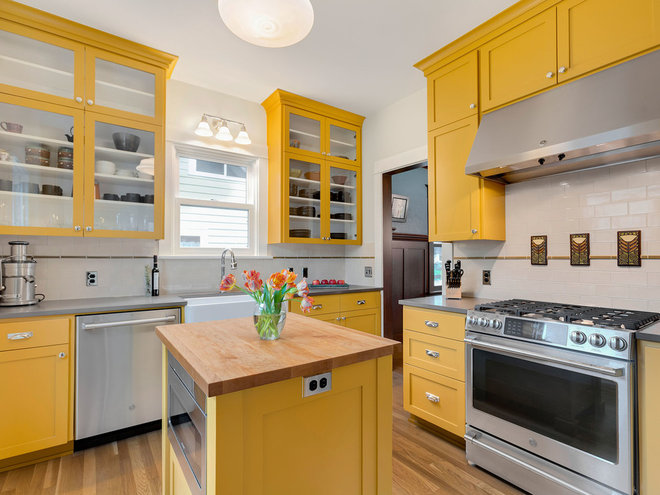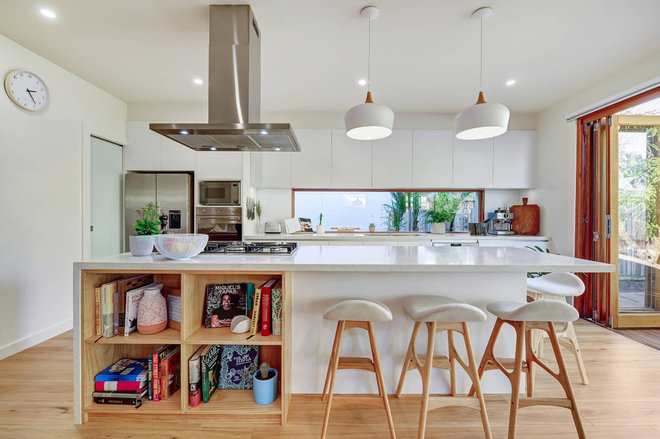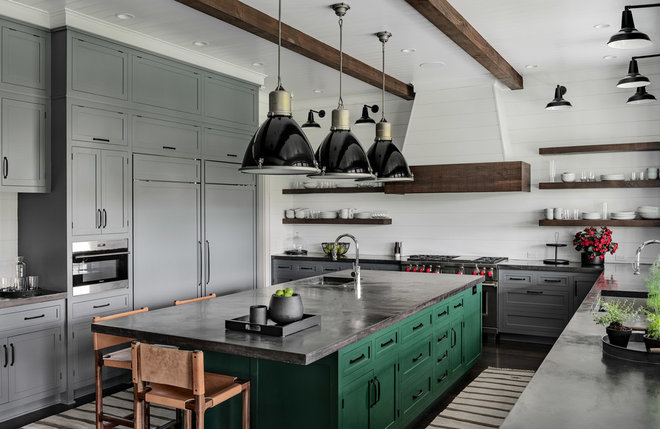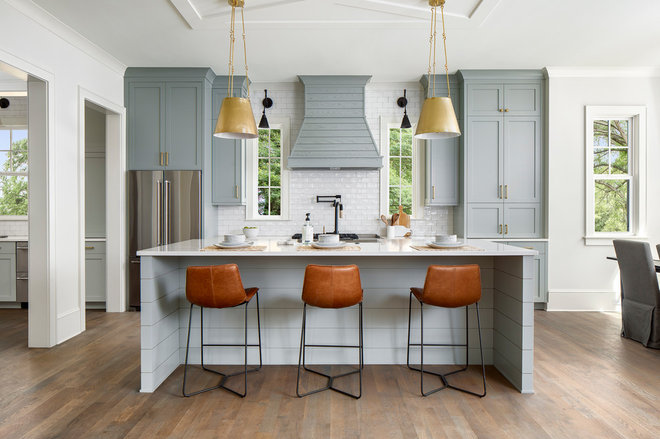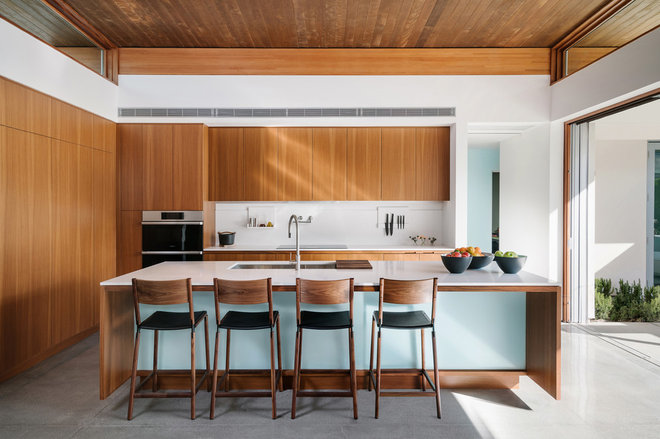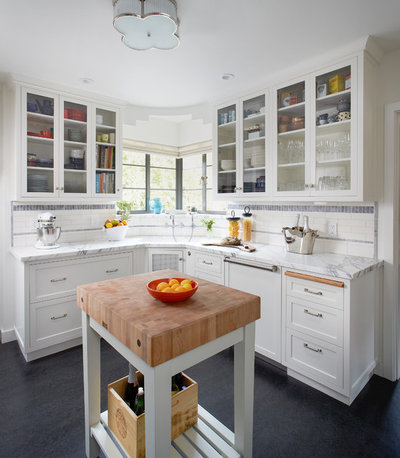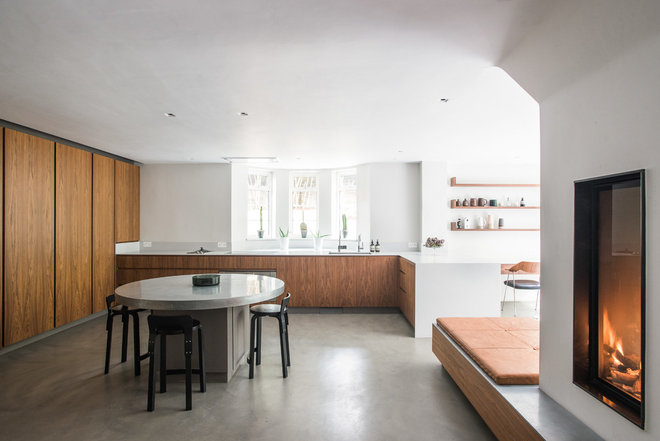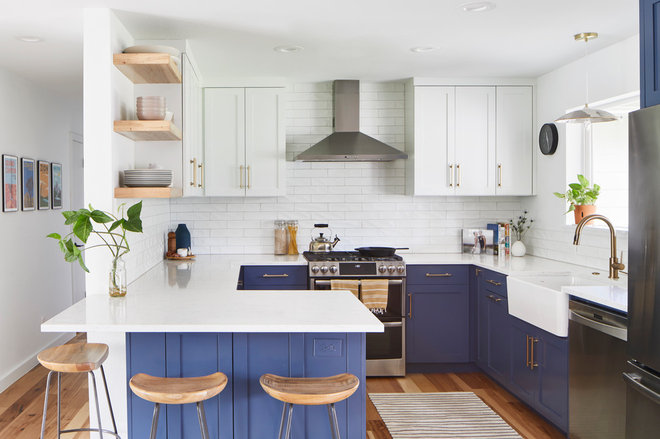Even though we all have the ability to make coffee at home, there's something comforting about recharging at our favourite coffee shop. Money doesn't matter, because we're not just paying for a $5 cup of coffee—we're paying for a vibe. Good tunes, dog-eared magazines and beat-up leather chairs pull you in like quicksand. And that sensory punch of ground beans and steamed milk? It's a delicious addiction.
The coffee shop is so beloved and ubiquitous that some modern workplaces have even gone so far as to emulate that coffee shop feel at the office. But why not take it a step further and recreate your favourite café atmosphere at home?
When you break it down, the coffee bar “look” can easily be achieved with a few carefully curated items and essential equipment. Soon, you'll have friends and family dropping into your kitchen for a cup of java instead of the local!
Pick your style
 Photo by Katlyn Giberson on Unsplash
Photo by Katlyn Giberson on Unsplash
First, nail down the design elements you love about your latte loafing headquarters. This is best determined by doing some research and visiting a few other shops to suss out the vibe. Do you gravitate towards the stark Scandi approach? Are you most at ease in an Industrial setting? Or do you err towards the comfortable, colourful cafés of bold Bohemia? Whatever your preferred design style, think about whether you're planning on working in your home café or simply want to use the space to hang out.
Lighten up
 Photo by Sabri Tuzcu on Unsplash
Photo by Sabri Tuzcu on Unsplash
Coffee shops generally rely on lots of natural light from floor-to-ceiling windows. The further recesses are easily warmed by floor lamps and swing arm reading lamps. If possible, create a café nook near a window and remember, pendant lights over countertops create ideal lighting for spreading out the weekend paper.
Shopping list: lighting
Scandinavian: Satin nickel LED floor lamps, drum-shaped wooden and metal flush mounts.
 Photo by Nicola Fioravanti on Unsplash
Photo by Nicola Fioravanti on Unsplash
Industrial: Foundry lamps, seven-light cluster pendants, oil-rubbed bronze caged ceiling lights, aviation-inspired double blade fans.
 Photo by Tomas Jasovsky on Unsplash
Photo by Tomas Jasovsky on Unsplash
Bohemian: Geometric pendants, Turkish Moroccan lanterns, aged brass pharmacy floor lamps, antique stain wicker blade fans.
 Photo by Omar Tursić on Unsplash
Photo by Omar Tursić on Unsplash
Take a seat
 Photo by The Creative Exchange on Unsplash
Photo by The Creative Exchange on Unsplash
It all comes down to ergonomics versus slouching. If your kitchen counter is going to double as a workstation, matte iron counter stools are sleek space-savers but aren't designed for the long haul. Window seats or banquettes offer casual flopping spots in micro spaces and can be piled up with throw cushions that lend to your look.
Shopping list: seating
Scandi: Polypropylene desk chairs, beech wishbone chairs with woven seats.
 Photo by Blake Parkinson on Unsplash
Photo by Blake Parkinson on Unsplash
Industrial: Drafting table stools, adjustable height swivel stools.
 Photo courtesy of Jules Torti
Photo courtesy of Jules Torti
Bohemian: Pear-shaped twill bean bags, Bardi's bowl chairs, howdah (traditionally used to carry people on the backs of elephants and camels), chunky knit or leather poufs.
 Photo by jose aljovin on Unsplash
Photo by jose aljovin on Unsplash
Against the wall
 Ingridi Alves Photograph on Unsplash
Ingridi Alves Photograph on Unsplash
Don't overlook the surface that allows you a free-range canvas of possibility! While you can rely on paint to achieve coffee shop coziness, textured options like faux brick walls will flip a room instantly. Consider open shelving with apothecary jars or hang unexpected art pieces like a spray-painted beach cruiser bike or an old axe or dart target board.
Shopping list
Scandi: Create your own blackboard surface with paint or visit a printer to design a retro vertical flat menu with your favourite or peculiar coffees from around the world like Scandinavian Egg Coffee. It's a thing!
 Photo by Nathan Dumlao on Unsplash
Photo by Nathan Dumlao on Unsplash
Industrial: If you don't live in a former warehouse with exposed brick, you can still achieve the look by purchasing faux brick wall panels and applying the German Schmear technique (a carefree whitewash of mortar and paint). It's a simple DIY with gratifying results.

Bohemian: This look offers so much freedom—from elephant tapestries, Batik designs, antlers or a collection of mismatched mirrors… anything goes.

In re-creating your favourite coffee shop at home, don't forget the vitals. Canvas friends for soundtrack requests or swap magazine piles. Grab games like Mahjong or The Worst-Case Scenario Survival Game. Have an ongoing Scrabble board for drop-in players—everyone must leave a word.
Most importantly, start collecting cool mugs, buy good beans and hone those barista skills!
Source: realtor.ca



